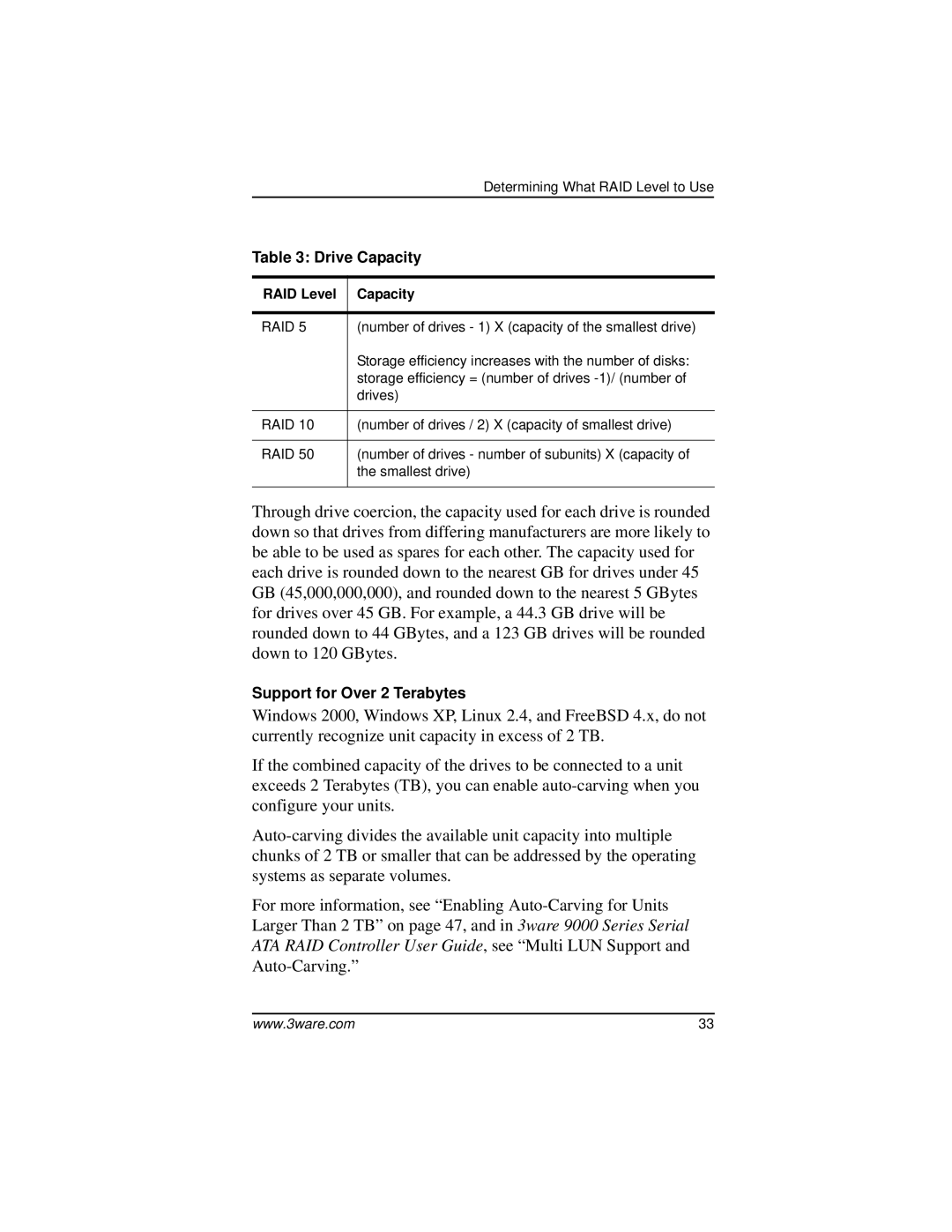| Determining What RAID Level to Use |
Table 3: Drive Capacity | |
|
|
RAID Level | Capacity |
|
|
RAID 5 | (number of drives - 1) X (capacity of the smallest drive) |
| Storage efficiency increases with the number of disks: |
| storage efficiency = (number of drives |
| drives) |
|
|
RAID 10 | (number of drives / 2) X (capacity of smallest drive) |
|
|
RAID 50 | (number of drives - number of subunits) X (capacity of |
| the smallest drive) |
|
|
Through drive coercion, the capacity used for each drive is rounded down so that drives from differing manufacturers are more likely to be able to be used as spares for each other. The capacity used for each drive is rounded down to the nearest GB for drives under 45 GB (45,000,000,000), and rounded down to the nearest 5 GBytes for drives over 45 GB. For example, a 44.3 GB drive will be rounded down to 44 GBytes, and a 123 GB drives will be rounded down to 120 GBytes.
Support for Over 2 Terabytes
Windows 2000, Windows XP, Linux 2.4, and FreeBSD 4.x, do not currently recognize unit capacity in excess of 2 TB.
If the combined capacity of the drives to be connected to a unit exceeds 2 Terabytes (TB), you can enable
For more information, see “Enabling
www.3ware.com | 33 |
